Formoterol and salmeterol induce a similar degree of β2-adrenoceptor tolerance in human small airways but via different mechanisms
- PMID: 21306583
- PMCID: PMC3101615
- DOI: 10.1111/j.1476-5381.2011.01257.x
Formoterol and salmeterol induce a similar degree of β2-adrenoceptor tolerance in human small airways but via different mechanisms
Abstract
Background and purpose: Steroids prevent and reverse salbutamol-induced β(2)-adrenoceptor tolerance in human small airways. This study examines the effects of the long-acting β(2) agonists (LABAs) formoterol and salmeterol, and the ability of budesonide to prevent desensitization.
Experimental approach: Long-acting β(2) agonists in the presence and absence of budesonide were incubated with human precision-cut lung slices containing small airways. Tolerance was deduced from measurements of reduced bronchodilator responses to isoprenaline and correlated with β(2)-adrenoceptor trafficking using a virally transduced, fluorescent-tagged receptor. The ability of the LABAs to protect airways against muscarinic-induced contraction was also assessed.
Key results: Following a 12 h incubation, both formoterol and salmeterol attenuated isoprenaline-induced bronchodilatation to a similar degree and these effects were not reversible by washing. Pre-incubation with budesonide prevented the desensitization induced by formoterol, but not that induced by salmeterol. Formoterol also protected the airways from carbachol-induced bronchoconstriction to a greater extent than salmeterol. In the epithelial cells of small airways, incubation with formoterol promoted receptor internalization but this did not appear to occur following incubation with salmeterol. Budesonide inhibited the formoterol-induced reduction in plasma membrane β(2)-adrenoceptor fluorescence.
Conclusions and implications: Although both formoterol and salmeterol attenuate isoprenaline-induced bronchodilatation, they appear to induce β(2)-adrenoceptor tolerance via different mechanisms; formoterol, but not salmeterol, enhances receptor internalization. Budesonide protection against β(2)-adrenoceptor tolerance was correlated with the retention of receptor fluorescence on the plasma membrane, thereby suggesting a mechanism by which steroids alter β(2)-adrenoceptor function.
© 2011 The Authors. British Journal of Pharmacology © 2011 The British Pharmacological Society.
Figures

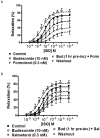
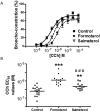
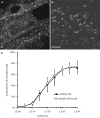
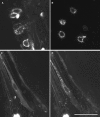
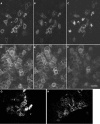
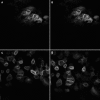
Similar articles
-
Pharmacological characterization of indacaterol, a novel once daily inhaled 2 adrenoceptor agonist, on small airways in human and rat precision-cut lung slices.J Pharmacol Exp Ther. 2008 Jan;324(1):270-5. doi: 10.1124/jpet.107.129296. Epub 2007 Oct 4. J Pharmacol Exp Ther. 2008. PMID: 17916760
-
Comparative trough effects of formoterol and salmeterol on lymphocyte beta2-adrenoceptor--regulation and bronchodilatation.Eur J Clin Pharmacol. 1999 Aug;55(6):431-6. doi: 10.1007/s002280050652. Eur J Clin Pharmacol. 1999. PMID: 10492055 Clinical Trial.
-
Budesonide prevents cytokine-induced decrease of the relaxant responses to formoterol and terbutaline, but not to salmeterol, in mouse trachea.J Pharmacol Exp Ther. 2010 Apr;333(1):273-80. doi: 10.1124/jpet.109.156224. Epub 2010 Jan 8. J Pharmacol Exp Ther. 2010. PMID: 20061444
-
Pharmacological basis for duration of effect: formoterol and salmeterol versus short-acting beta 2-adrenoceptor agonists.Lung. 1996;174(1):1-22. doi: 10.1007/BF00167947. Lung. 1996. PMID: 8746998 Review.
-
Clinical pharmacology of long-acting beta-receptor agonists.Life Sci. 1993;52(26):2161-9. doi: 10.1016/0024-3205(93)90730-q. Life Sci. 1993. PMID: 8099697 Review.
Cited by
-
ASM-024, a piperazinium compound, promotes the in vitro relaxation of β2-adrenoreceptor desensitized tracheas.PLoS One. 2015 Mar 23;10(3):e0120095. doi: 10.1371/journal.pone.0120095. eCollection 2015. PLoS One. 2015. PMID: 25799096 Free PMC article.
-
Multiple facets of cAMP signalling and physiological impact: cAMP compartmentalization in the lung.Pharmaceuticals (Basel). 2012 Nov 30;5(12):1291-331. doi: 10.3390/ph5121291. Pharmaceuticals (Basel). 2012. PMID: 24281338 Free PMC article.
-
Organotypic Models of Lung Cancer.Curr Top Microbiol Immunol. 2021;430:161-181. doi: 10.1007/82_2017_79. Curr Top Microbiol Immunol. 2021. PMID: 29423618
-
Fixed airflow obstruction in asthma: a descriptive study of patient profiles and effect on treatment responses.J Asthma. 2014 Aug;51(6):603-9. doi: 10.3109/02770903.2014.895012. Epub 2014 Mar 19. J Asthma. 2014. PMID: 24524222 Free PMC article. Clinical Trial.
-
Effects of rhinovirus 39 infection on airway hyperresponsiveness to carbachol in human airways precision cut lung slices.J Allergy Clin Immunol. 2018 May;141(5):1887-1890.e1. doi: 10.1016/j.jaci.2017.11.041. Epub 2018 Jan 6. J Allergy Clin Immunol. 2018. PMID: 29317243 Free PMC article. No abstract available.
References
-
- Adner M, Larsson B, Safholm J, Naya I, Miller-Larsson A. Budesonide prevents cytokine-induced decrease of the relaxant responses to formoterol and terbutaline, but not to salmeterol, in mouse trachea. J Pharmacol Exp Ther. 2010;333:273–280. - PubMed
-
- Cao TT, Deacon HW, Reczek D, Bretscher A, von Zastrow M. A kinase-regulated PDZ-domain interaction controls endocytic sorting of the beta2-adrenergic receptor. Nature. 1999;401:286–290. - PubMed
Publication types
MeSH terms
Substances
LinkOut - more resources
Full Text Sources

